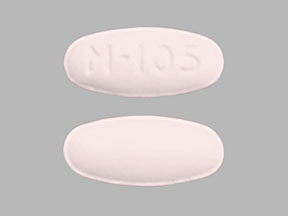Calcium/folic acid/ginger/pyridoxine Disease Interactions
There are 7 disease interactions with calcium / folic acid / ginger / pyridoxine.
- Phosphate calcifications
- Cardiac contraction/conduction
- Malabsorption
- Renal dysfunction
- Sarcoidosis
- Anemia
- Malabsorption
Calcium salts (applies to calcium/folic acid/ginger/pyridoxine) calcium- phosphate calcifications
Major Potential Hazard, High plausibility. Applicable conditions: Phosphate Imbalance
Elevated serum concentrations of calcium and phosphate can exceed the solubility level and result in calcium- phosphate precipitates that deposit in vascular and renal systems as well as other soft tissues of the body. Therapy with calcium should be administered with extreme caution in patients with hyperphosphatemia (hypoparathyroidism or severe renal impairment). Administration of oral calcium acetate or calcium carbonate, in addition to providing calcium, complexes phosphates within the GI tract. These complexes are eliminated in the feces. Clinical monitoring of serum calcium and phosphate concentrations is necessary.
Calcium salts (applies to calcium/folic acid/ginger/pyridoxine) cardiac contraction/conduction
Major Potential Hazard, High plausibility. Applicable conditions: Arrhythmias
Calcium is involved in cardiac muscle contraction and electrical impulse conduction. Therapy with calcium salt formulations (particularly IV) should be administered cautiously to patients with cardiac disease. Patients receiving cardiac glycosides and concomitant IV calcium may experience arrhythmias. Therapy with IV calcium should be administered slowly and at reduced dosages in patients with cardiac disease.
Calcium salts (applies to calcium/folic acid/ginger/pyridoxine) malabsorption
Major Potential Hazard, High plausibility. Applicable conditions: Achlorhydria, Malabsorption Syndrome
Calcium is absorbed from the intestinal tract by active transport and passive diffusion. Malabsorption syndromes (celiac disease, GI resection), deficiency of vitamin D, parathyroid hormone, or calcitonin, or an alkaline gastric pH (achlorhydria, carbonate or phosphate salts) can decrease the absorption of oral formulations of calcium. Calcium is available in oral and parenteral formulations.
Calcium salts (applies to calcium/folic acid/ginger/pyridoxine) renal dysfunction
Major Potential Hazard, High plausibility.
Absorption of oral calcium formulations may be altered and elimination of calcium by the kidney decreased with renal impairment. Hyperphosphatemia occurs during renal failure. Calcium acetate or calcium carbonate, in addition to providing calcium, complexes phosphates within the GI tract. Calcium carbonate can partially correct metabolic acidosis associated with chronic renal failure. Clinical monitoring of renal function and serum calcium and phosphate concentrations is necessary.
Calcium salts (applies to calcium/folic acid/ginger/pyridoxine) sarcoidosis
Major Potential Hazard, High plausibility.
Hypercalciuria, with or without hypercalcemia, may occasionally occur in patients with sarcoidosis. Elevated calcium levels may result from increased intestinal absorption of calcium, which is related to the extrarenal production of vitamin D by mononuclear phagocytes present within the sarcoid granuloma. Therapy with calcium salts should be administered cautiously and only if necessary in patients with sarcoidosis.
Folic acid (applies to calcium/folic acid/ginger/pyridoxine) anemia
Major Potential Hazard, High plausibility. Applicable conditions: Anemia of Unspecified Nutritional Deficiency
The use of folic acid is contraindicated in patients with undiagnosed anemia. Folic acid in dosages above 1 mg/day can obscure the diagnosis of pernicious anemia by alleviating the hematologic abnormalities while allowing the progression of neurologic complications. In addition, folic acid alone is improper therapy in the treatment of pernicious anemia and other megaloblastic anemias where vitamin B12 is deficient.
Vitamin B complex (applies to calcium/folic acid/ginger/pyridoxine) malabsorption
Moderate Potential Hazard, High plausibility. Applicable conditions: Alcoholism, Malabsorption Syndrome, Cirrhosis
The B vitamins are readily absorbed in the GI tract following oral administration. However, GI absorption may be decreased in patients with malabsorption syndromes and other conditions. For example, the absorption of thiamine and pyridoxine may commonly be decreased in alcoholics and in patients with cirrhosis. Likewise, riboflavin absorption may be impaired in patients with hepatitis, cirrhosis, or biliary obstruction. When malabsorption of these vitamins is suspected, parenteral administration may be appropriate.
Switch to professional interaction data
Calcium/folic acid/ginger/pyridoxine drug interactions
There are 218 drug interactions with calcium / folic acid / ginger / pyridoxine.
Calcium/folic acid/ginger/pyridoxine alcohol/food interactions
There are 2 alcohol/food interactions with calcium / folic acid / ginger / pyridoxine.
More about calcium / folic acid / ginger / pyridoxine
- calcium/folic acid/ginger/pyridoxine consumer information
- Check interactions
- Compare alternatives
- Side effects
- Drug class: vitamin and mineral combinations
Related treatment guides
Drug Interaction Classification
| Highly clinically significant. Avoid combinations; the risk of the interaction outweighs the benefit. | |
| Moderately clinically significant. Usually avoid combinations; use it only under special circumstances. | |
| Minimally clinically significant. Minimize risk; assess risk and consider an alternative drug, take steps to circumvent the interaction risk and/or institute a monitoring plan. | |
| No interaction information available. |
See also:
Further information
Always consult your healthcare provider to ensure the information displayed on this page applies to your personal circumstances.


